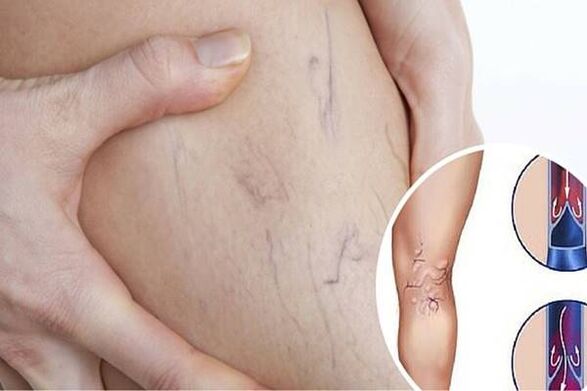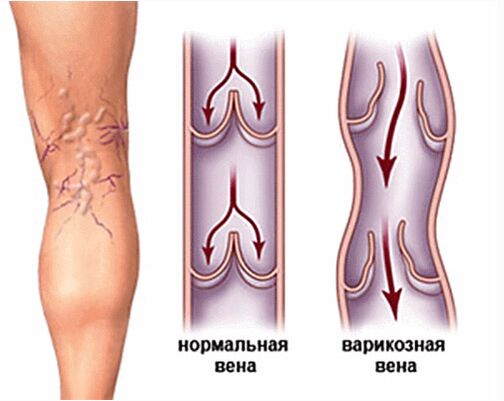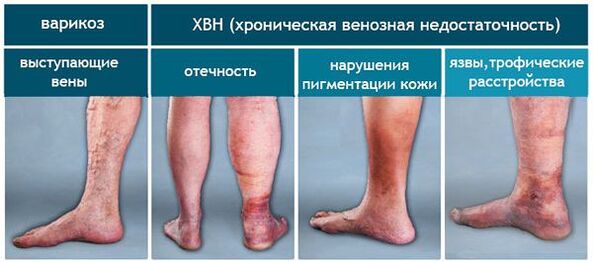According to statistics, about 83% of the population faces diseases such as varicose veins in the lower limbs.Therefore, it is important to know how the initial stage looks like varicose veins.This will promptly identify the disease and prevent the development of possible complications.

Types of varicose veins
Vein diseases are accompanied by their expansion, and the destruction of valve equipment can affect various organs in the human body.Therefore, the classification of this pathology is based on its localized location.
According to the International Classification of Diseases in Comment 10, this type of disease is distinguished:
- Varicocele of the blood circulation system.
- Expansion of the digestive veins.
- Many pathological clots accumulate in one place.
- Changes in lymph nodes and blood vessels in other parts.
- Varicocele veins in the lower limbs swell.
The use of ICD 10 in medical practice can enable the bleeder to properly diagnose and distinguish varicose veins.
In turn, varicose veins in the lower limbs are classified as the following diseases according to the stage of the course:
- Ulcer lesions.
- Progressive inflammatory process.
- Ulcers and inflammation.
- Varicocele in the legs or other parts of the skin damage.
- Lack of ulcers, venous deformation of the inflammatory process.
Considering the main location of pathological changes, varicose veins are distinguished:
- Superficial vein.
- Deep vein.
- Mesh.
The broad classification of varicose veins depends on the variety of options for the course of the disease.In the distinction between pathology, modern doctors use not only ICD-10, but also form of disease classification.
In medical practice, this form of varicose veins is distinguished:
- Subcutaneous and intradermal blood vessels are partially damaged without reverse outflow.
- Blood flows backwards through all veins.
- In the explanation of pathology in the subcutaneous vein, this is a widespread failure.
- Abnormal venous lesions are excreted through the deep vein.
There may be several types of venous deformation and dysfunction in the blood flow.Only doctors can correctly diagnose and establish dilation of varicose veins based on the results of complex examinations.

The degree of varicose veins
According to the process of disease progression, varicose veins have 4 developmental stages.Each of them has certain symptoms.
- In the first stage, the severity of the legs and the pain are felt.Visualize blood vessel stars, knotted veins and swelling.Involuntary spasms of the calf muscles and foot burning are possible.It is characterized by no stagnation in the blood.
- The second degree of varicose veins is accompanied by oxygen starvation in the venous system.It is characterized by the rapid increase in size and number of vascular lymph nodes and stars.This impairment clearly expresses boundaries, which helps them to perform brighter.Their grouping in the same area where they failed may be small.In this case, the pain and swelling of the soft tissue will increase.
- The third degree of varicose veins forms nutritional lesions on the inner surface of the lower leg.It is characterized by the appearance of the brown areas on the skin, which is covered by a dry shell and cracks as the disease progresses.In their context, it is possible.The presence of large edema becomes dangerous.There is a lot of fatigue and pain.
- Level 4 is a complication of the disease.They can appear in the form of the development of the inflammatory process, nutritional ulcers on the walls of the venous.It may bleed and mechanically damage the seal.This degree is dangerous and may cause venous insufficiency, which can then be obtained in a chronic form.
During the third and fourth stages, the patient begins to experience severe pain of different properties on the muscles and venous trunk.It is extremely rare and may experience lymph node rupture, accompanied by loss of blood.Most of the time, this sign is manifested at night.If there are veins with varicose veins, high temperatures and weaknesses, it directly indicates that the disease complications are present.
The variable itself is not a dangerous disease that cannot be treated.However, it is worth noting that this pathology is not carried out alone and is developing rapidly.The recognition of primary varicose veins significantly increases the term for rapid and successful recovery.The fourth-level launch of varicose veins is dangerous to the body and human life.

Stage of varicose veins in the lower limbs
Varicose veins are characterized by several stages of pathology.Each determines the prevalence of the disease and has certain characteristics.There are many categories of stages of varicose veins, and each vein has its own symptoms and treatments.Most importantly, in professional practice, modern doctors use varicose veins classification based on the degree of blood flow changes in the body's blood vessels.
Distinguish the following stages of the disease:
- Its characteristic is the problem of cosmetic performance.There are no symptoms of thrombosis, but when the patient is examined, the initial stage of varicose veins in the legs will be found.According to the pathological etiology, the compensation stage of varicose veins that are not properly treated throughout the year can develop into a second degree varicose vein.
- Blood vessels may deform and manifest clearly on the surface of the legs.Variables at this stage are accompanied by pain and swelling in the lower limbs.There is a severity, the sensation of the outbreak and significantly increases the sensitivity of the skin.The swelling of the legs at night will increase and it disappears the next morning.
- The visual signs of pathologists increased significantly.The venous network and nodes are no longer just in the region, but in volume.A strong feeling of itching appeared.The surface of the skin is given a dark shade, which becomes dry and shiny.At this stage, a small bleeding occurs, which causes a slow pressure deposition, resulting in skin pigmentation in the affected area.
The initial stages of varicose veins in each organism are carried out differently.The intensity of its symptom manifestations and duration of this period are individual and depend on many factors.Therefore, you should seek qualified medical care immediately when showing the slightest sign of pathology.Timely treatment will prevent the development of more severe stages of varicose veins.
The initial stage of varicose veins on the legs: pathological treatment
The effectiveness of the treatment process directly depends on the timely manifestation of the pathology.In the initial stages of disease development, qualified medical services allow you to fully restore the integrity of the blood vessel wall and the function of damaged veins.
Complete treatment of varicose veins at the initial stage, including:
- Complex use of drugs.For complex effects of the intravenous veins, oral intake of tablet preparations was performed.Using topical drugs in ointment and gel form has a high therapeutic effect.
- Sclerotherapy.After the operation, special compression knitted clothing must be worn.The effectiveness of sclerosis therapy explains its use during the compensatory stage of varicose veins in the lower limbs.
- Ozone therapy.Refers to treatment, which is one of the components of complex varicose veins in the initial stage.This process enhances cellular nutrients with oxygen and stimulates blood circulation through veins.As a result, the affected blood vessel wall is bonded.
Every treatment for varicose veins requires mandatory medical prescriptions and controls.Self-determination of varicose veins is strictly prohibited.
Varicocele on the lower limbs at an initial level is difficult to diagnose independently.Visual information on the Internet helps visually familiarize yourself with the characteristics of pathology.


















